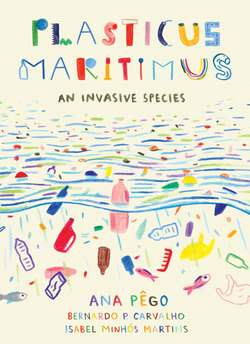Читать книгу Plasticus Maritimus - Ana Pego - Страница 12
На сайте Литреса книга снята с продажи.
ОглавлениеWhat the oceans mean to us
We don’t always remember, but the oceans have three very important functions in the life of the planet: they are the main regulator of climate, they produce more than half of the oxygen that we breathe, and they are the habitat and source of food for huge numbers of living things.
THE PLANET’S THERMOSTAT
A thermostat is a device that regulates temperature. The oceans act as a kind of planet thermostat. They absorb and store a large part of the sun’s radiation and prevent the earth’s temperature from getting too hot. In addition, the oceans’ currents redistribute the sun’s heat to different regions. This helps to maintain the comfortable temperatures we have on earth and makes it possible for humans to live here.
THE PLANET’S LUNGS
When we talk about oxygen, the first thing we think of is trees or forests. What we might not know is that plants in the ocean are responsible for more than half of the oxygen we breathe. There is a huge mass of microscopic plants called phytoplankton or microalgae. We’re unaware of them because they are so small you can only see them through a microscope. They are floating around the oceans and doing exactly what all other plants do. Through photosynthesis, they absorb carbon dioxide and produce oxygen.
If the oceans were to become full of plastic and pollutants, this mass of microalgae would quickly disappear. That could happen because the toxic substances in plastic kill some of the microalgae, and also because huge amounts of plastic floating around make it difficult for the sun’s light to penetrate the water. Without sunlight, microalgae die.
AWESOME NUMBERS
An astounding 50 to 70 percent of the oxygen we breathe is produced in the oceans. In fact, the oceans produce more oxygen than all of the rainforests together. (This does not mean that rainforests are not essential. Long live the rainforests!)
A huge thank-you to microalgae.
Without them, we wouldn’t be here.
THE OCEAN FOOD CHAIN
In the ocean food chain, the smallest organisms are eaten by larger ones. The chain begins with phytoplankton or microalgae, the microscopic plants that float around the oceans.
1.Phytoplankton are the base of the food chain and serve as food for many animals.
2.Next in line are zooplankton, the tiniest-sized animals (such as fish larvae or minuscule crustaceans) that serve as food for small fish.
3.Next come the medium-sized fish, and then the giant ones. We humans are also part of the ocean food chain.
We know that some phytoplankton adhere, or stick, to microplastics in the sea. If the phytoplankton are the base of the ocean food chain, you’ve already figured out what will happen next—all the animals that feed on phytoplankton will be eating plastic. And all the animals that eat the animals that eat the phytoplankton will also be eating plastic! That includes us.
For the planet to be healthy, the ocean’s phytoplankton must be healthy, because they begin the nutrient cycle that feeds an enormous number of living beings on earth.
The interaction between humans and oceans
A lot of memorable things have happened between us and the oceans: expeditions, discoveries, problems, and decisions. Here are some of the most important.
1872–1876
The British Challenger expedition circles the earth, bringing new information about ocean temperatures, currents, marine life, and the sea floor.
1943
Jacques Cousteau and Émile Gagnan create the Aqua Lung, the first underwater breathing device, making extended underwater exploration and filming possible.
1950
Plastic waste begins to reach the oceans.
1960
A guided probe reaches the bottom of the Mariana Trench, the deepest point on the ocean floor, about 36,000 feet or 11,000 meters down.
1970
Scientists issue the first warnings about the existence of microplastics in the North Atlantic.
1973
The International Convention for the Prevention of Pollution from Ships—the MARPOL Convention—is signed. It restricts discharges of waste (including plastics) from ships.
1992
The Topex/Poseidon satellite begins mapping the surface of the oceans.
1995
The Geosat satellite begins mapping the bottom of the oceans.
1997
While taking part in a regatta, Captain Charles Moore discovers a huge island—of plastic—in the North Pacific Ocean. He is one of the first people to draw attention to the ocean plastics problem.
2008
The United Nations (UN) creates World Oceans Day—June 8.
2010
The first census (or official count) of marine life takes place, examining the diversity and distribution of marine animals, plants, and fungi.
Organizations from all over the world begin to publish guidelines to combat the marine garbage problem.
2011
Plastic industries commit to taking action to help solve the problem of plastics in the oceans.
2012
Marine garbage is one of the priorities of the UN Conference on Sustainable Development (Rio+20).
2014
The word “microplastic” enters our everyday vocabulary.
2016
France becomes the first country in the world to pass a law banning the use of disposable plastic that is not biodegradable.
The UK approves a law to ban microplastics in cosmetics.
2018
The European Union (EU) presents its plastics strategy: by 2030, all packaging in EU countries must be recycled or reused.
2019
British scientists begin to map ocean plastics by satellite.
2020
More people and countries all over the world become aware of the ocean plastics problem. If you are reading this book, you’re part of this group!
